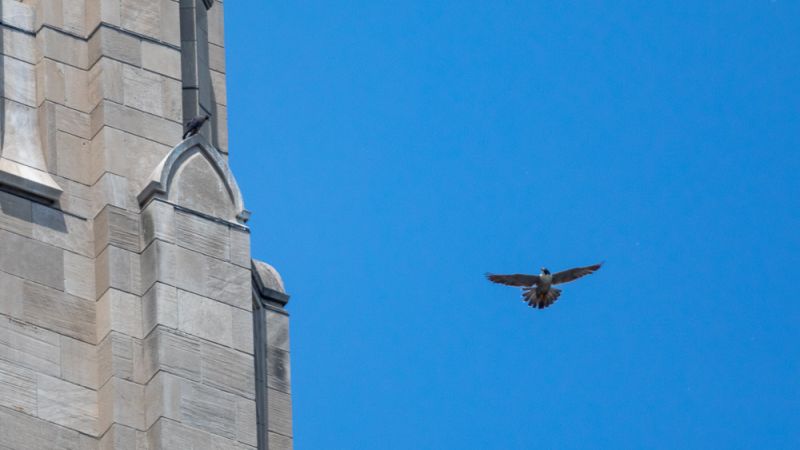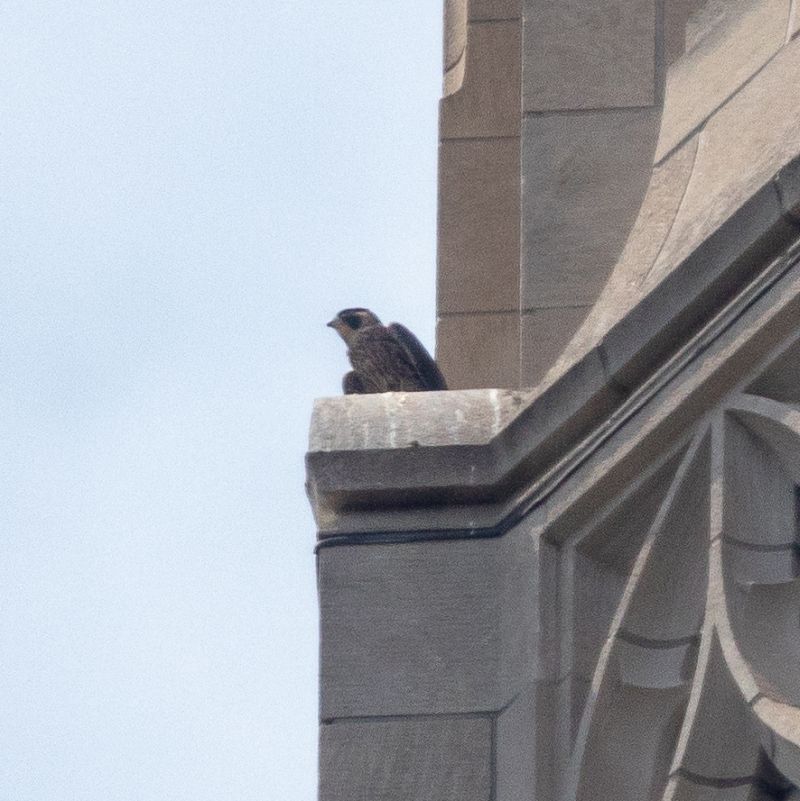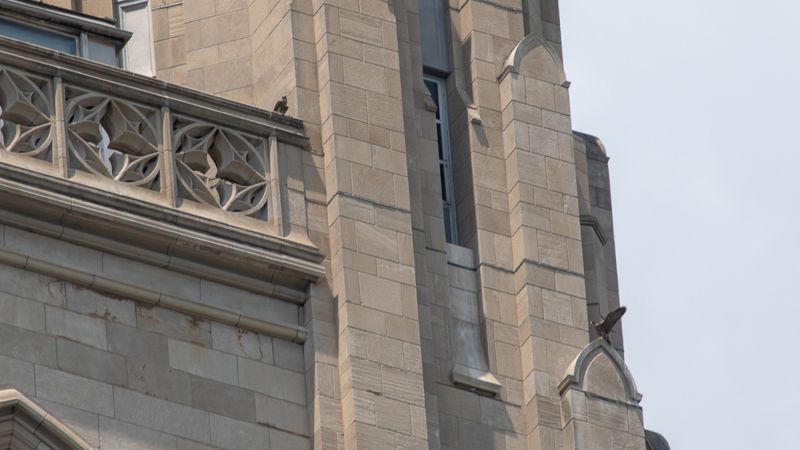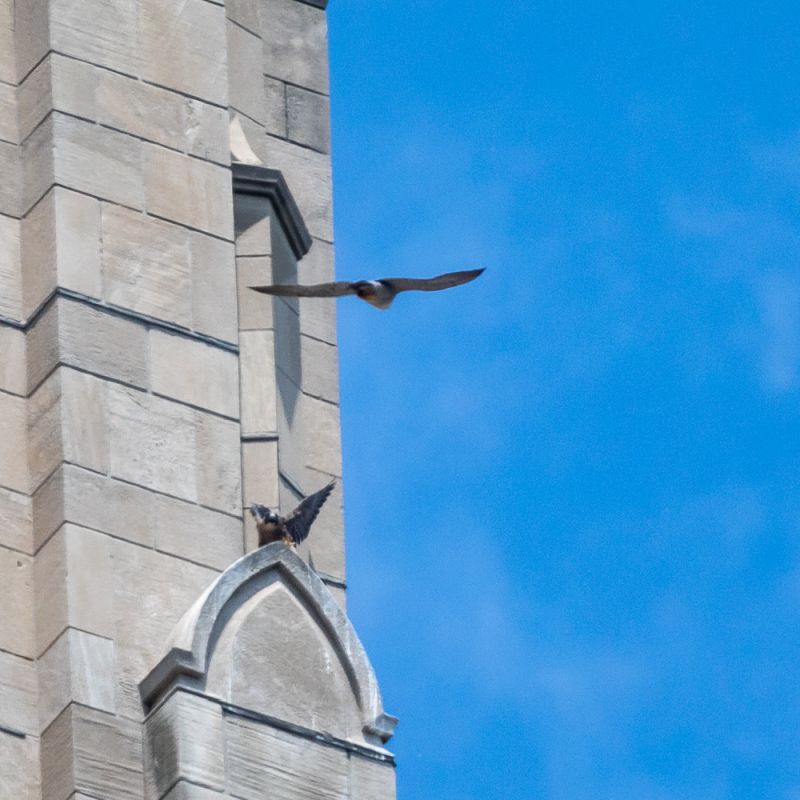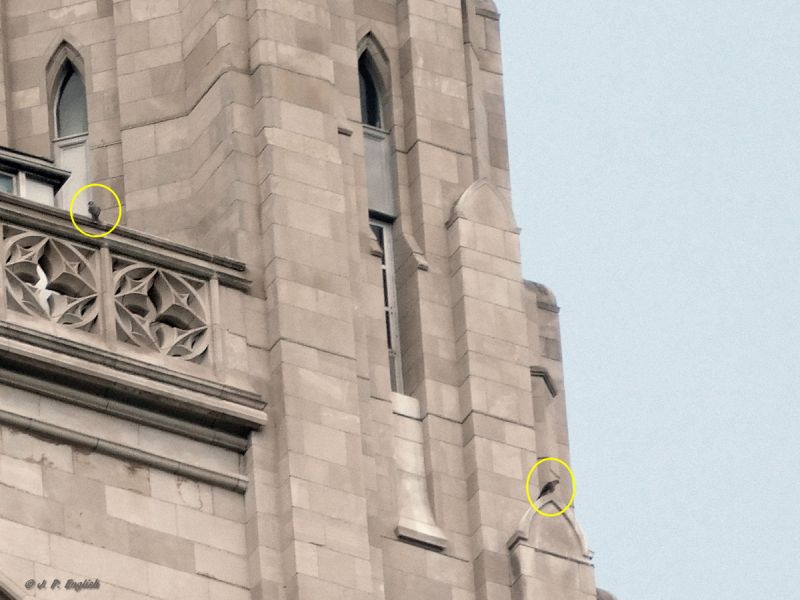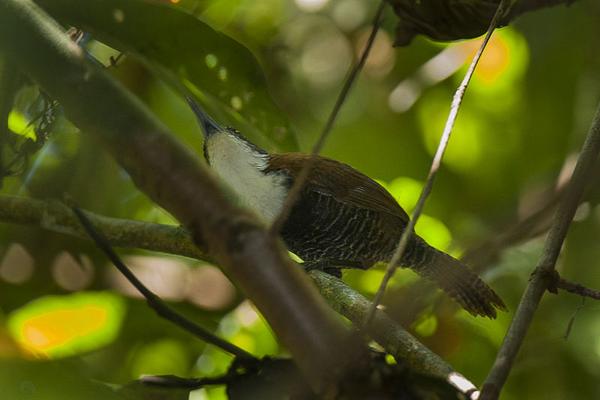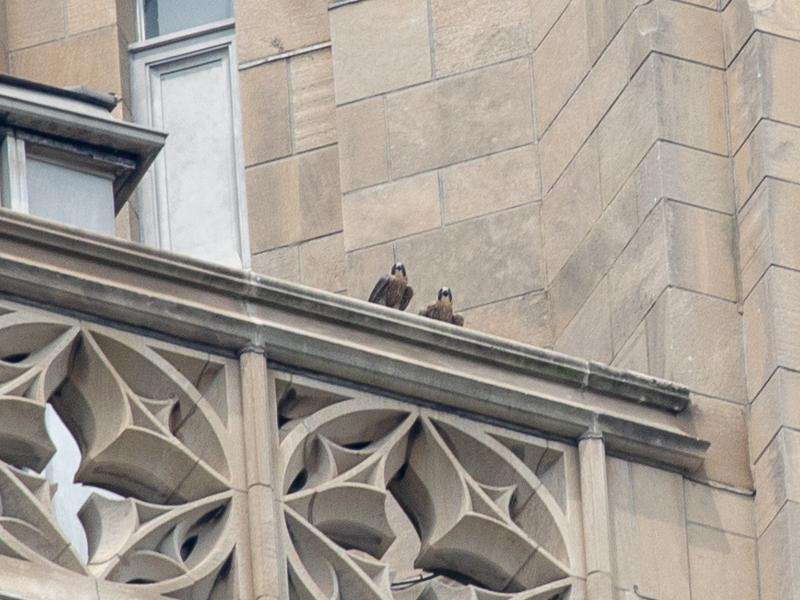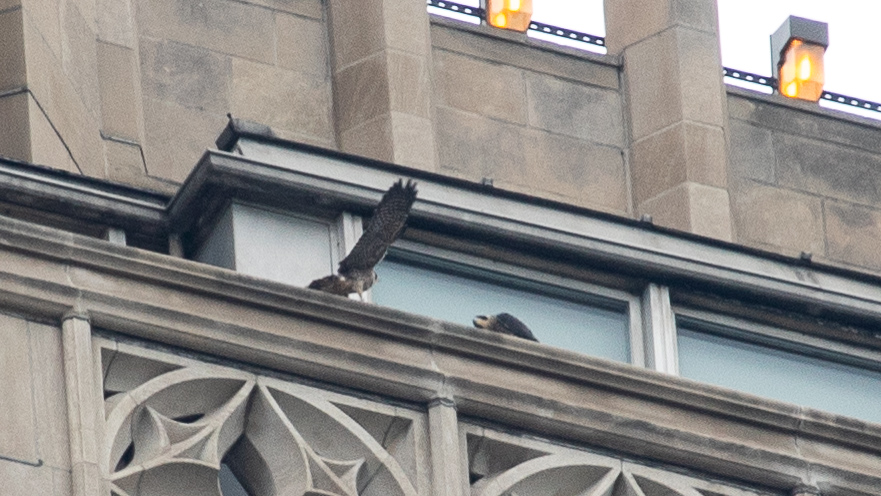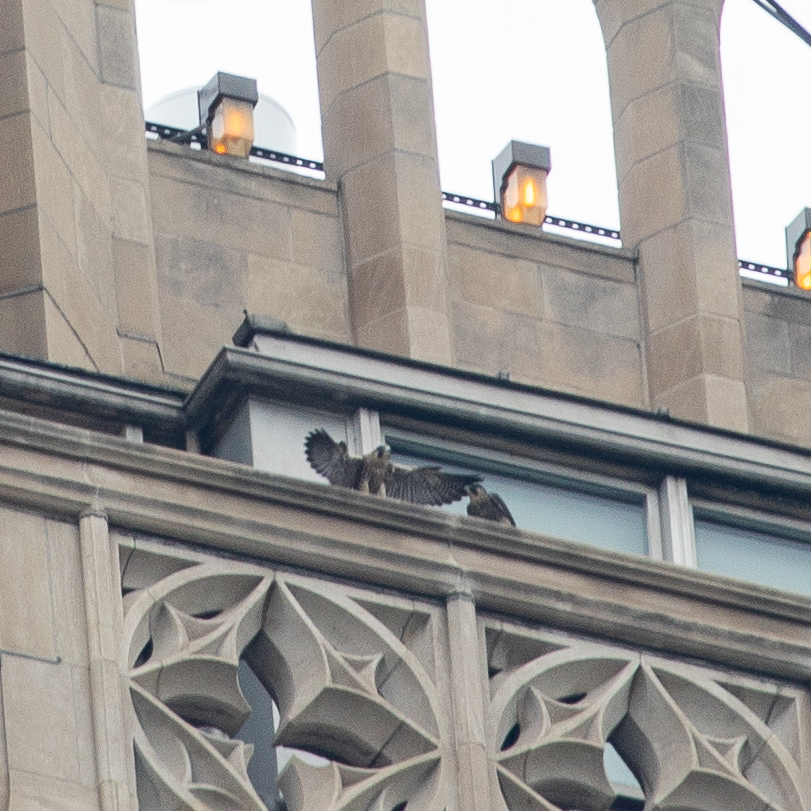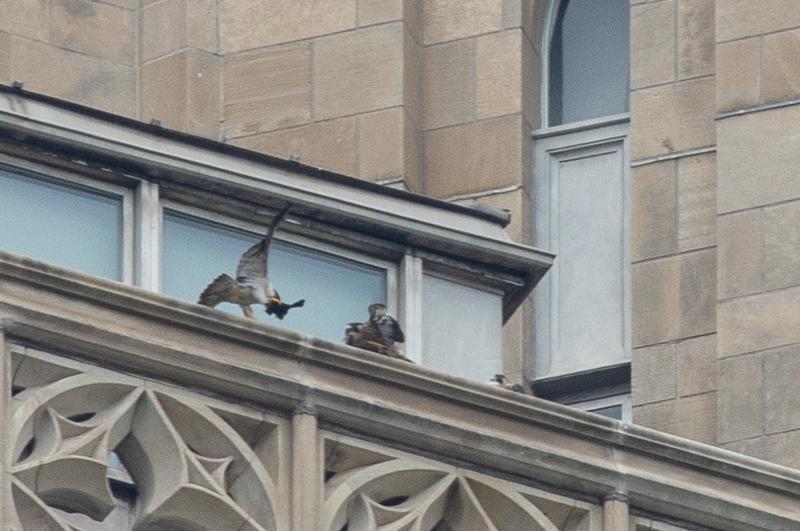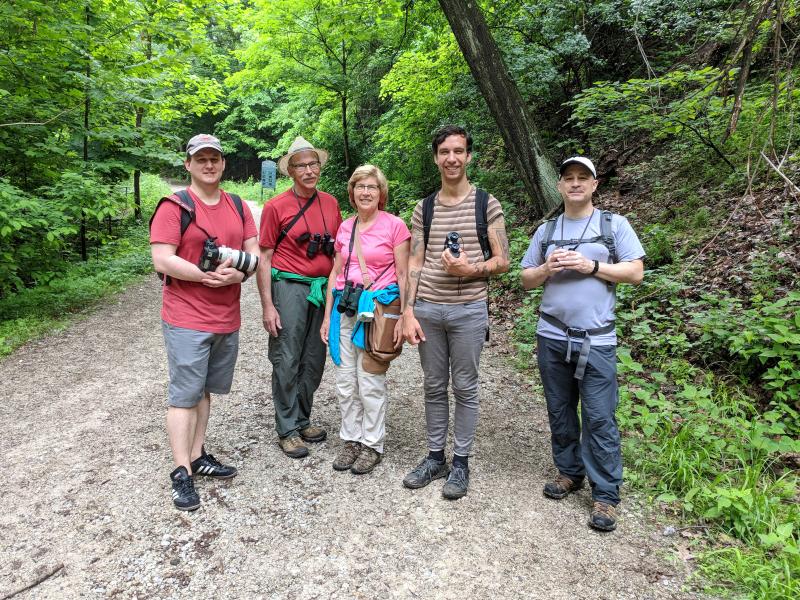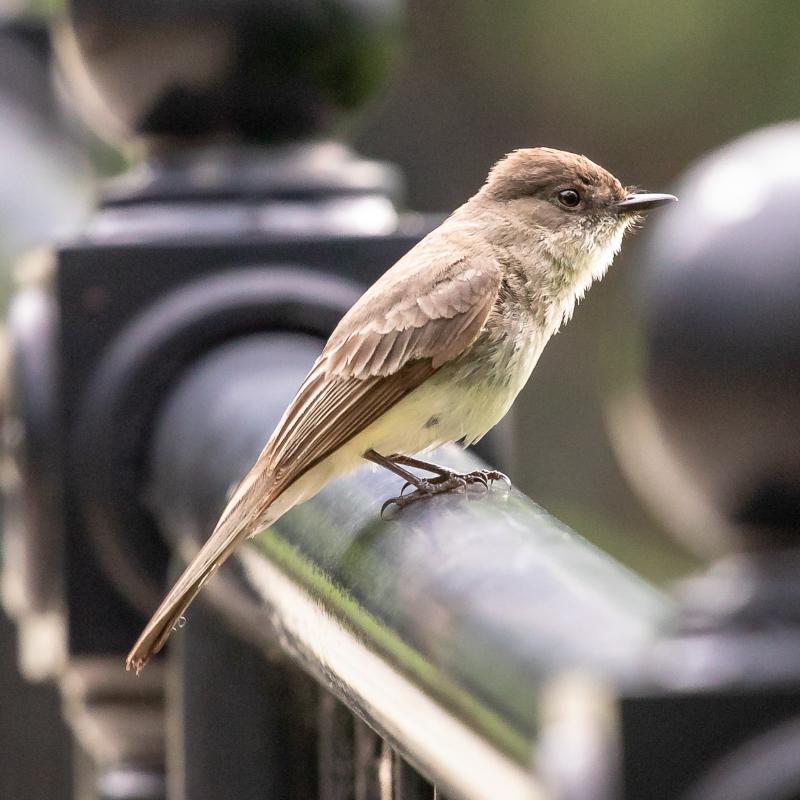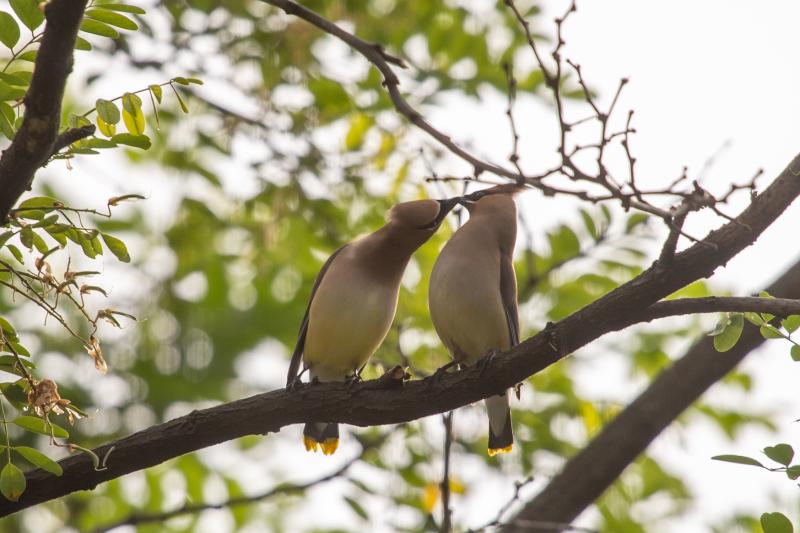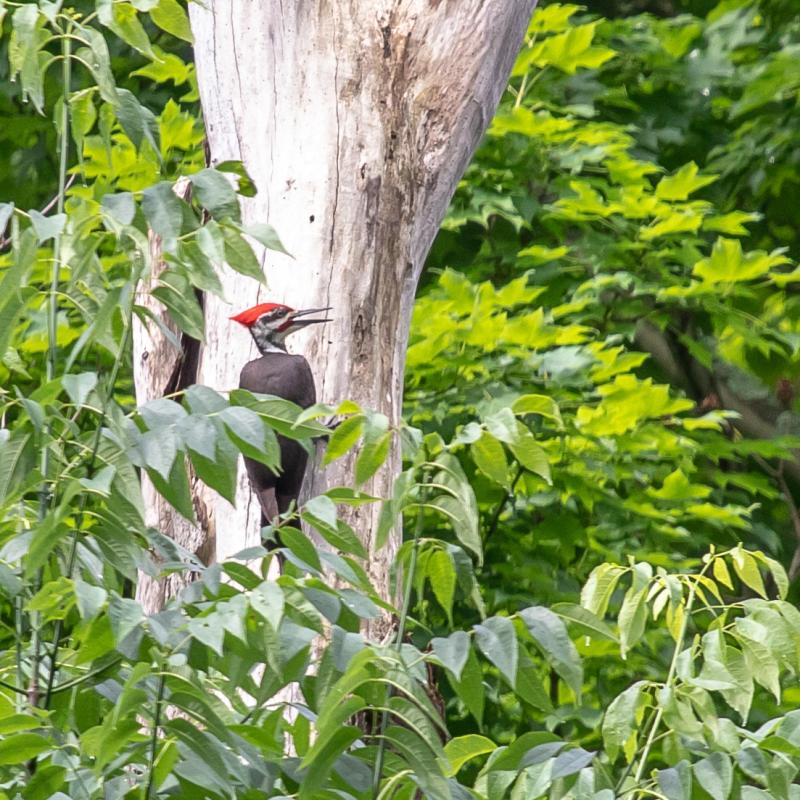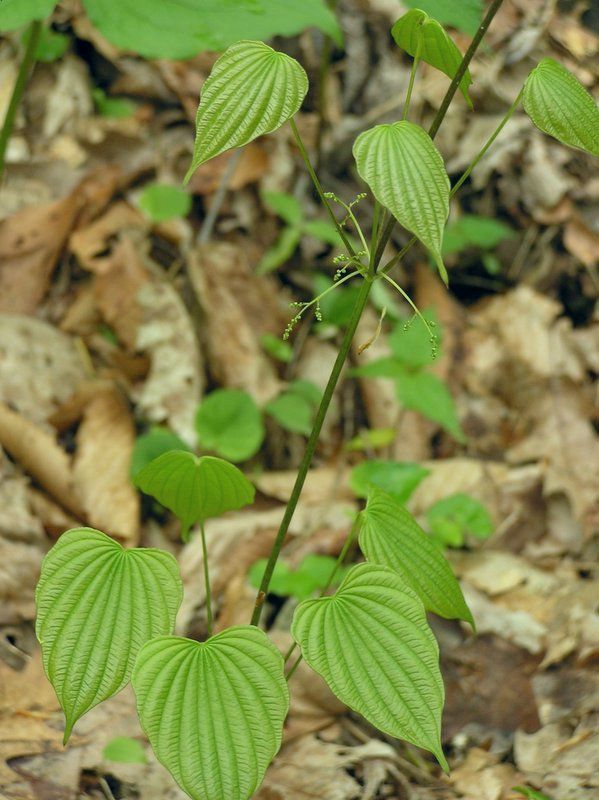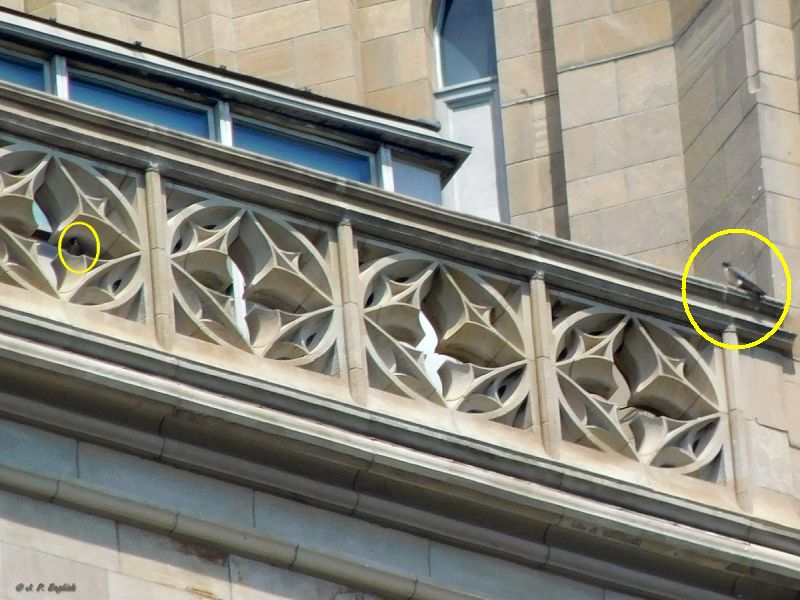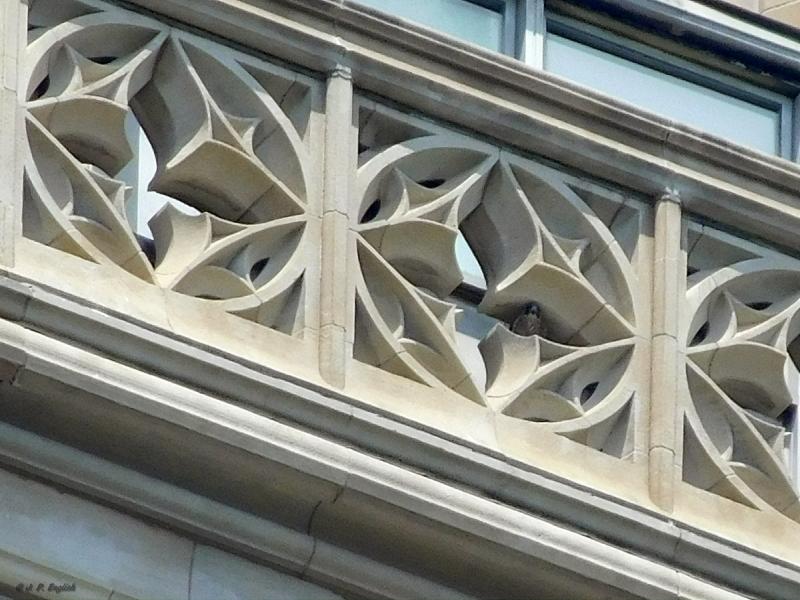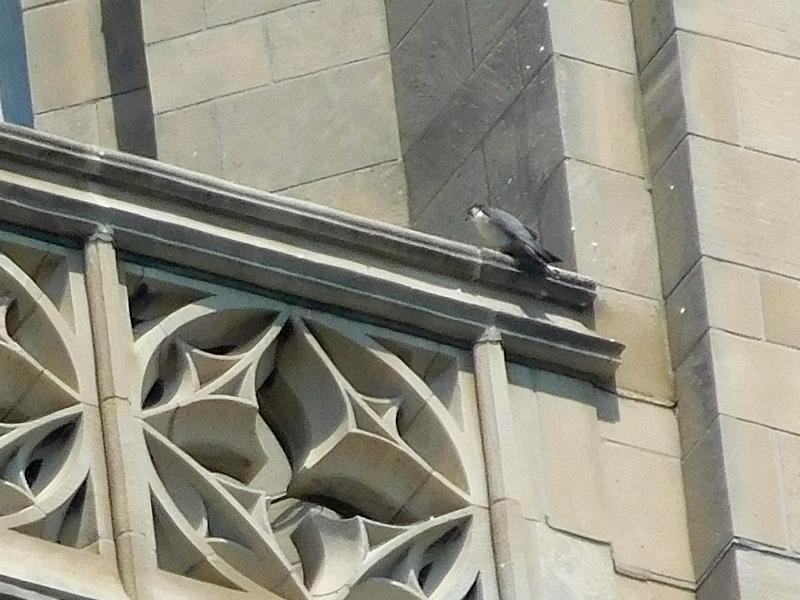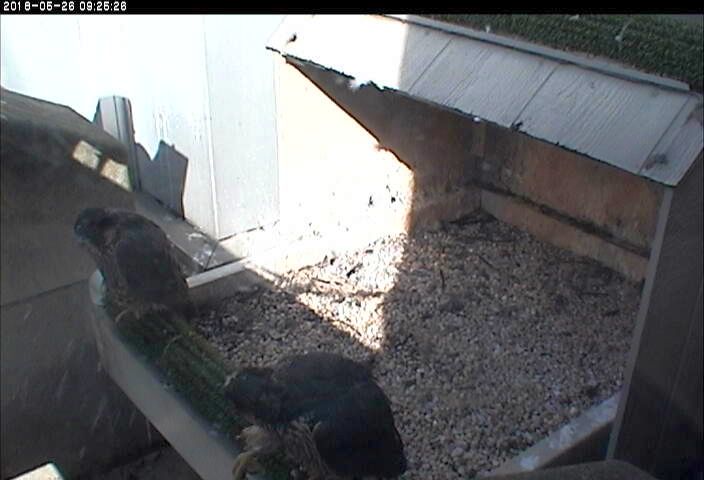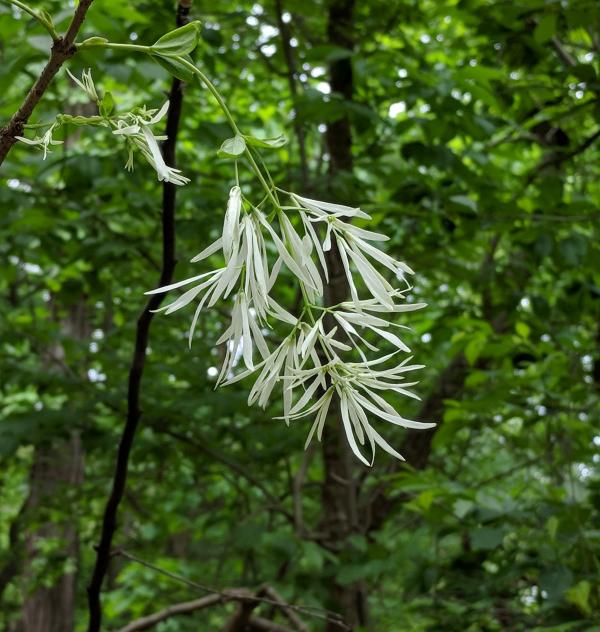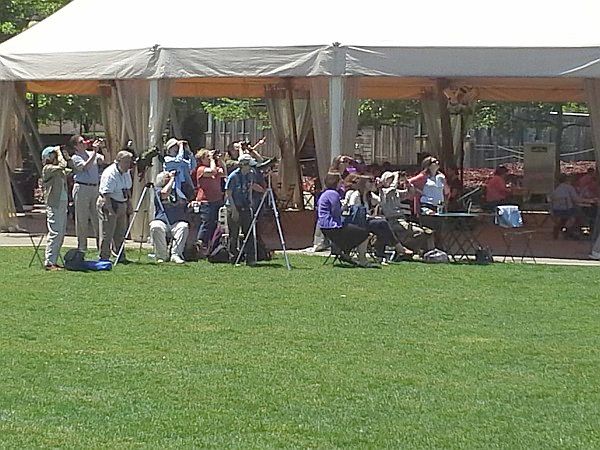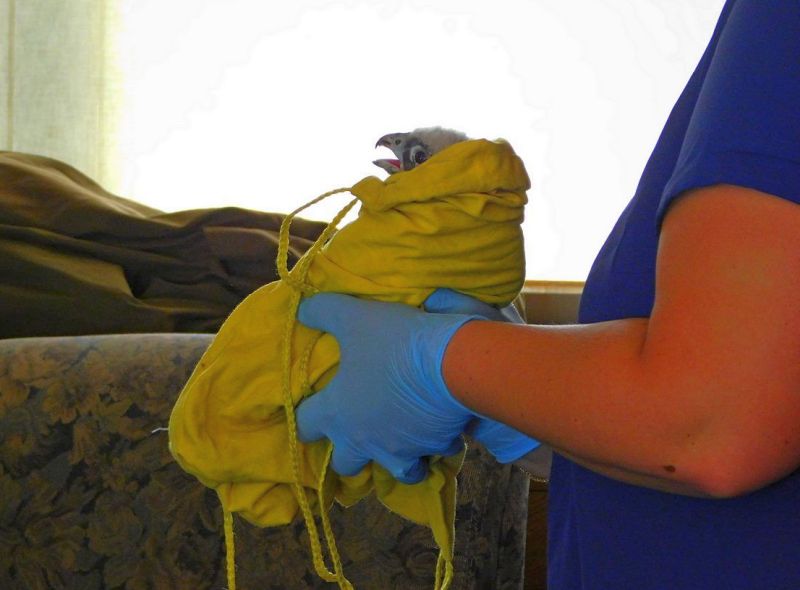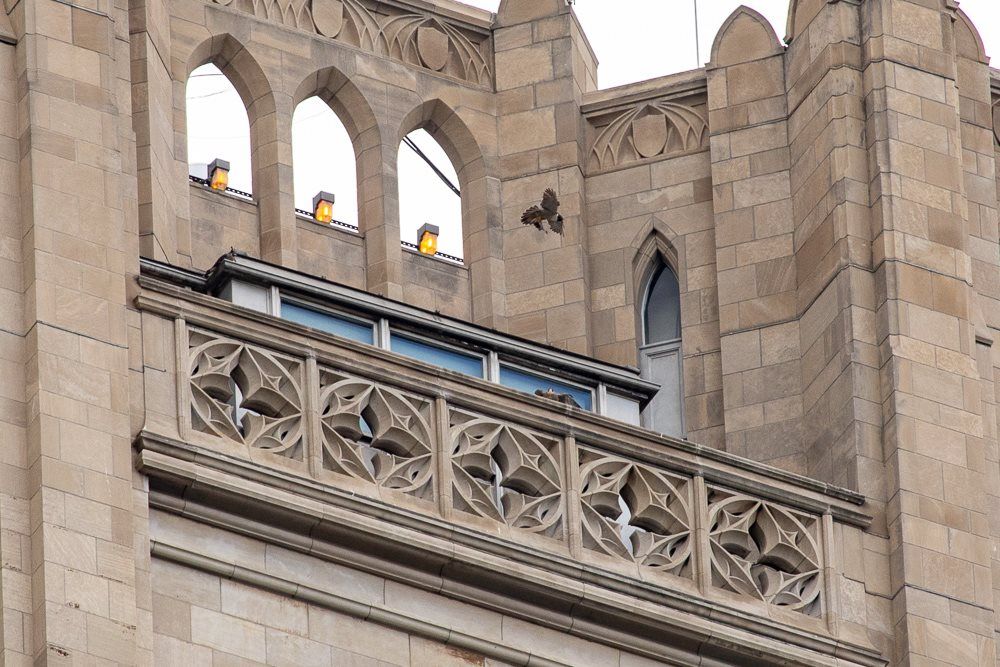
May 31, 2018: includes 2 photos from yesterday’s update.
We were treated to quite an airshow yesterday at Fledge Watch.
Fledgling #1 made his first flight on May 29 and was flying so well on his second day out that we sometimes mistook him for an adult. He circled the Cathedral of Learning many times and soared into the wind. He also used many perches — the northwest roof merlon, a spot above the yellow lights, the Babcock Room roof and gutter. He even joined his brother on the railing in hopes that food would arrive. It didn’t.
Hope and Terzo circled, swooped and dove. They exchanged prey in mid-air. They put on the best flight show we’ve seen for years but youngster #2 wouldn’t budge. Hope even pulled food from the cache area and dangled it from her talons as she hovered over him. He shouted and flapped his wings … and he stayed put.
The yellow circles below show their locations while this was going on: #1 in the Babcock Room gutter (left), Hope hovering above, #2 on the railing.
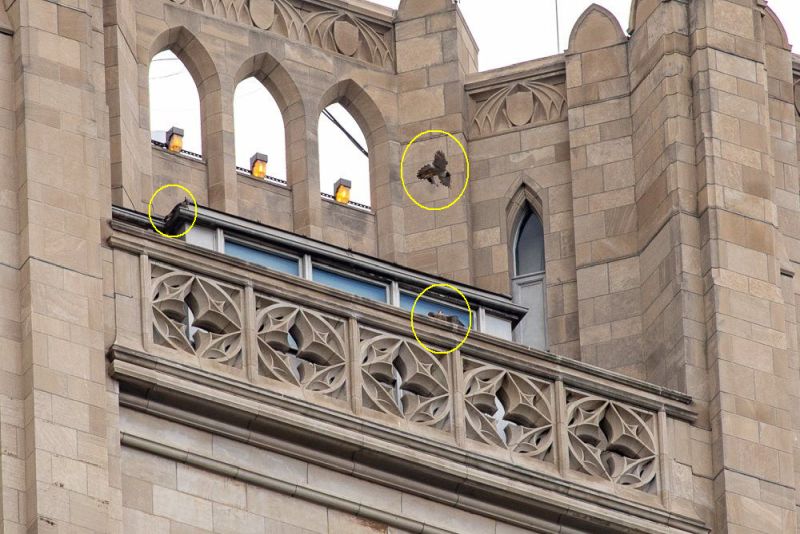
If you can’t imagine how #1 got into the gutter, here he is as he makes that decision.
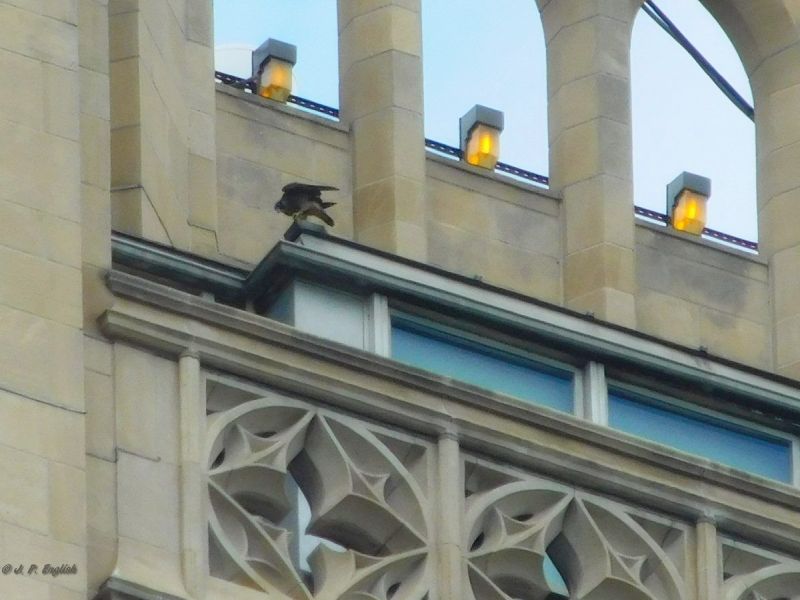
By late afternoon one of them — probably #2 — was so tired that he slept on top of the nestbox.
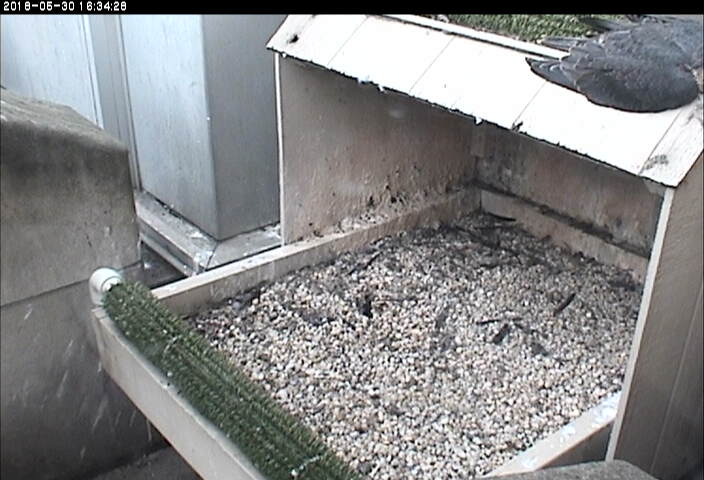
Fifteen minutes later he was awake and ready for more.
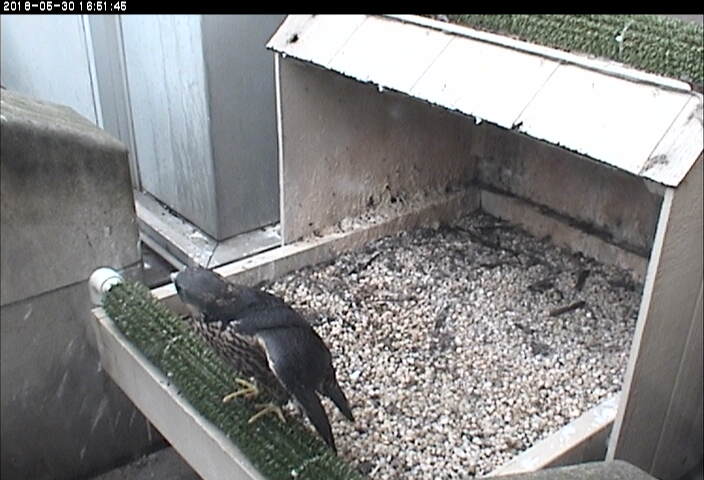
We’re in for rain and thunderstorms for the next four days. Fledge Watch is over.
But life doesn’t stop for the Pitt peregrines. #2 will fledge. The two juveniles will improve their flying skills. They’ll learn to hunt and by early July they’ll leave home.
Long life to both of them. (Don’t try anything dangerous near glass!)
(photos by Peter Bell (Pitt Peregrines on Facebook) and John English (Pittsburgh Falconuts on Facebook). see captions for details)
